Air inlets play crucial role in ventilation
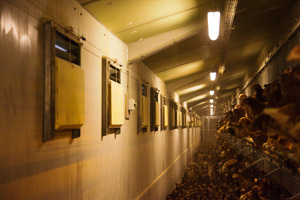
Cold spots, frozen inlets, floor eggs and unused nest, they are just a few signs of poor air inlets and movements in poultry houses. Steering incoming air in the right direction and sometimes in different directions proves to be successful.
By Wiebe van der Sluis , Rooster 45, Doetinchem, the Netherlands
Ventilation is one of those subjects that may become an issue when the construction and installation of a poultry house has been completed. It often happens that predominant wind directions play a role in the air movement inside and the amount of air going through the poultry house. Then, sometimes expensive, adjustments have to be made.
But what if, apart from this foreseeable issue, the air movement inside the house is causing problems, like creating cold spots or draught. Most of the time it is the start of a puzzle, which includes daily fan adjustments as well as playing with the air inlets. Jan de Graaf, ventilation specialist and former owner of Tulderhof Agrosystems, knows a lot about those puzzles. He especially refers to problems he encountered in Russia, where nearly all poultry houses used to have low ceilings and many thick concrete poles and rafters which proved to be obstructions for ventilation.
During wintertime many houses suffered from poor ventilation, condensation of incoming air, and worst of all ice forming on the air inlets or even inside the house. Farm managers were confronted with this problem so often that they accepted it as part of life. “It is as it is,” they said. For Jan this was not the answer he was looking for. During a long stopover at one of Moscow’s airports he picked up the puzzle and drew his first idea about a solution. The key to the solution was, according to him, changing the air inlets.
De Graaf was convinced that even in the most complicated livestock building, fresh air could be delivered to any place at all times. It was just a matter of where to put air inlets and fans with sufficient capacity. He concluded that the fans were not the problem, but the air inlets. The traditional inlets did not have enough possibilities to steer the air to different spots in the house. Most of the time they either dropped the incoming air just near the wall or somewhere in the middle of the house, while it should go to all places. This meant that the ideal inlet should have the possibility to send the air in different directions. Based on that idea de Graaf went on thinking and in 2007 he came up with a revolutionary solution. He named his invention Flash and today it is one of the showpieces of Tulderhof. It has proved its value in hundreds of livestock buildings around the world.
Adjustable spoilers
The Flash air inlet steers the incoming air before it enters the building by means of individually adjustable spoilers. They decide the direction the incoming air is going, while a vertically moving and well insulated plastic slide regulates the amount of air. This means that the throw or steering of the direction and the amount of air are separated.
The Flash air inlet steers the incoming air before it enters the building by means of individually adjustable spoilers. They decide the direction the incoming air is going, while a vertically moving and well insulated plastic slide regulates the amount of air. This means that the throw or steering of the direction and the amount of air are separated.
The individually adjustable spoilers in the inlet make it possible to send incoming air in different directions. A smoke test helps to make the right setting. “We had to set them only once and it works for years”, said Jan van Kessel, a layer farmer in Lunteren, the Netherlands. He has one aviary house with 48,000 layers. Due to the construction of the multi-tier system it could be very difficult to get fresh air all over, but not with this air inlet van Kessel said, “We get the air where we want it and certainly not in the nests. We are glad we have them.” Van Kessel’s colleague Mr Vlastuin, who owns a layer farm in Renswoude gave a similar response. He compared one house with the Flashair inlet and one house without and discovered interesting differences. Due to the better air distribution he saw less health problems (esp. e-coli) in the flock kept in the house with the innovative air inlet. The result is a much lower mortality (6% compared to 12% in the other house) and thus at the end more eggs.
No condensation
Since the air inlet is placed in the wall and the air steered in the right direction before it enters the house there is no condensation on, or freezing of, the inlet. This makes them ideal for houses in countries with extreme winter weather, as many Russian and Canadian farmers would agree, says de Graaf not only referring to layer houses but also to broiler accommodations. These houses tend to get wider and wider, so there is more pressure on getting enough fresh air across the whole space. Thanks to the easily adjustable spoilers they were able to get an ideal climate even in houses of 30 metres wide, he said. The Flash steers the air extra deep, without leaving “dead spots”.
Since the air inlet is placed in the wall and the air steered in the right direction before it enters the house there is no condensation on, or freezing of, the inlet. This makes them ideal for houses in countries with extreme winter weather, as many Russian and Canadian farmers would agree, says de Graaf not only referring to layer houses but also to broiler accommodations. These houses tend to get wider and wider, so there is more pressure on getting enough fresh air across the whole space. Thanks to the easily adjustable spoilers they were able to get an ideal climate even in houses of 30 metres wide, he said. The Flash steers the air extra deep, without leaving “dead spots”.
Although traditionally most air inlet problems occur during the winter time, de Graaf also thought about that. His invention is not only qualified to solve one season problems, through a combination of separately controlled winter and summer inlets the system also covers the needs for hot weather ventilation. During the winter season one-third of all inlets are operating and in the summer the remaining two-thirds will be opened. The activating and steering of these inlets is done by computer and runs problem free. As more and more producers face regulations which dictate the provision of daylight to the birds, Tulderhof offers transparent air inlets and which, like the non transparent version, easily fit in a light street or row of connected windows.
Join 31,000+ subscribers
Subscribe to our newsletter to stay updated about all the need-to-know content in the poultry sector, three times a week. Beheer
Beheer

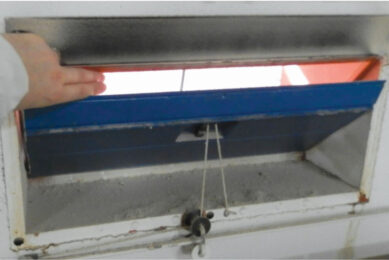
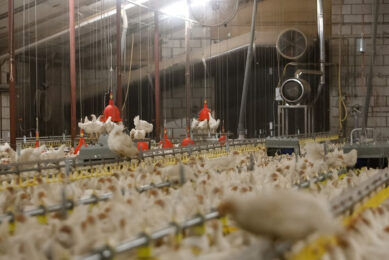
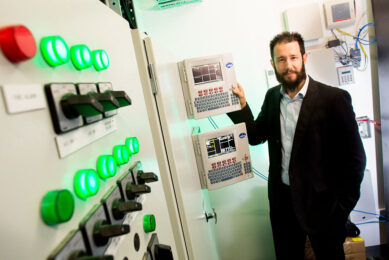
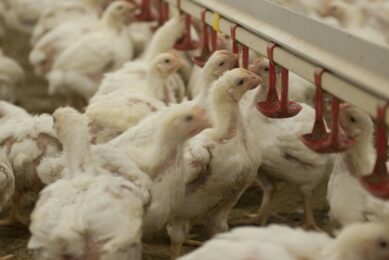



 WP Admin
WP Admin  Bewerk bericht
Bewerk bericht